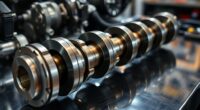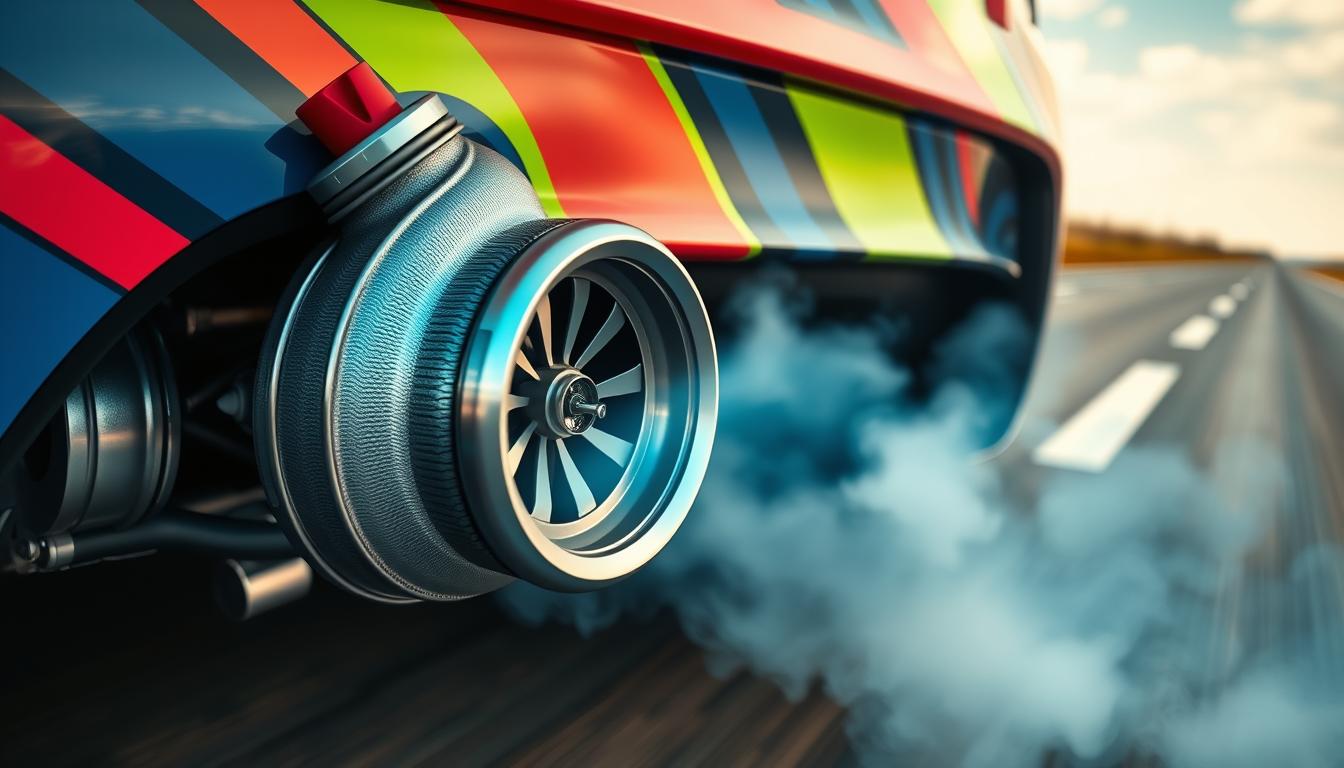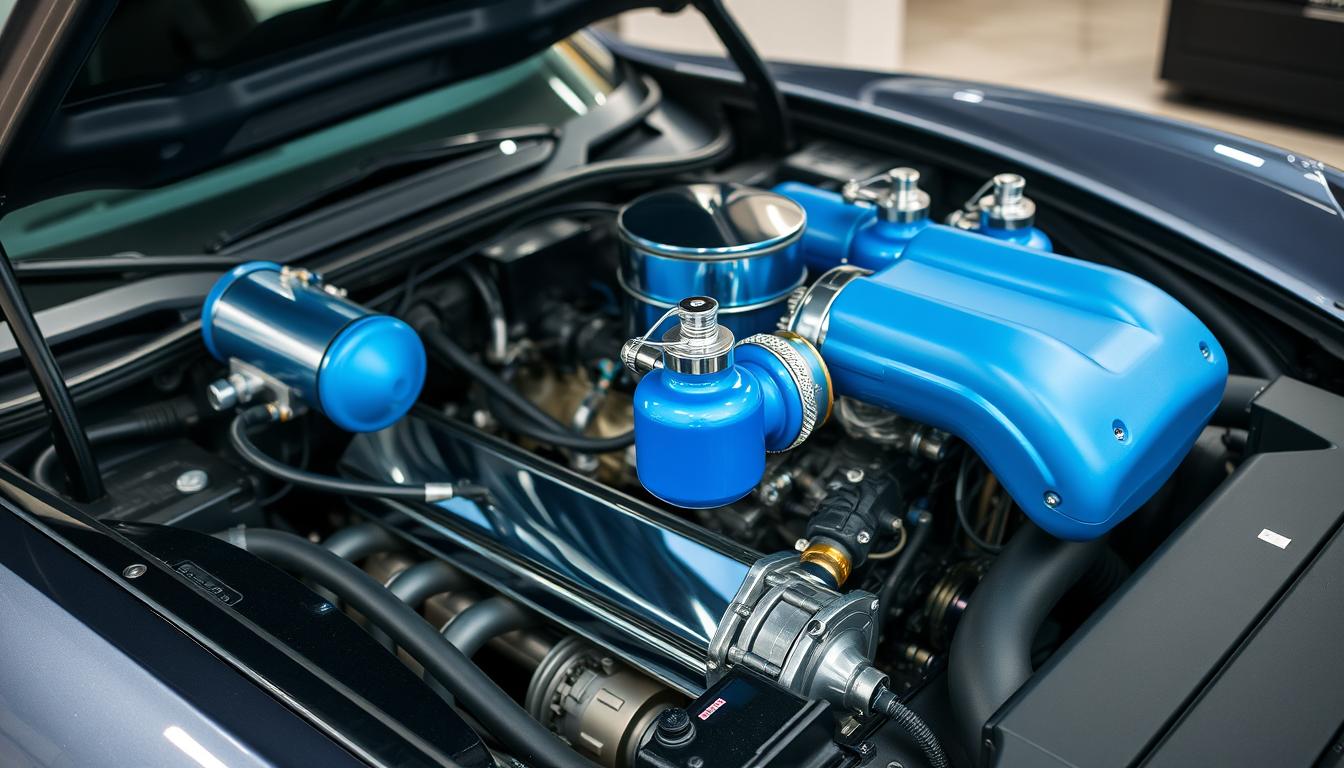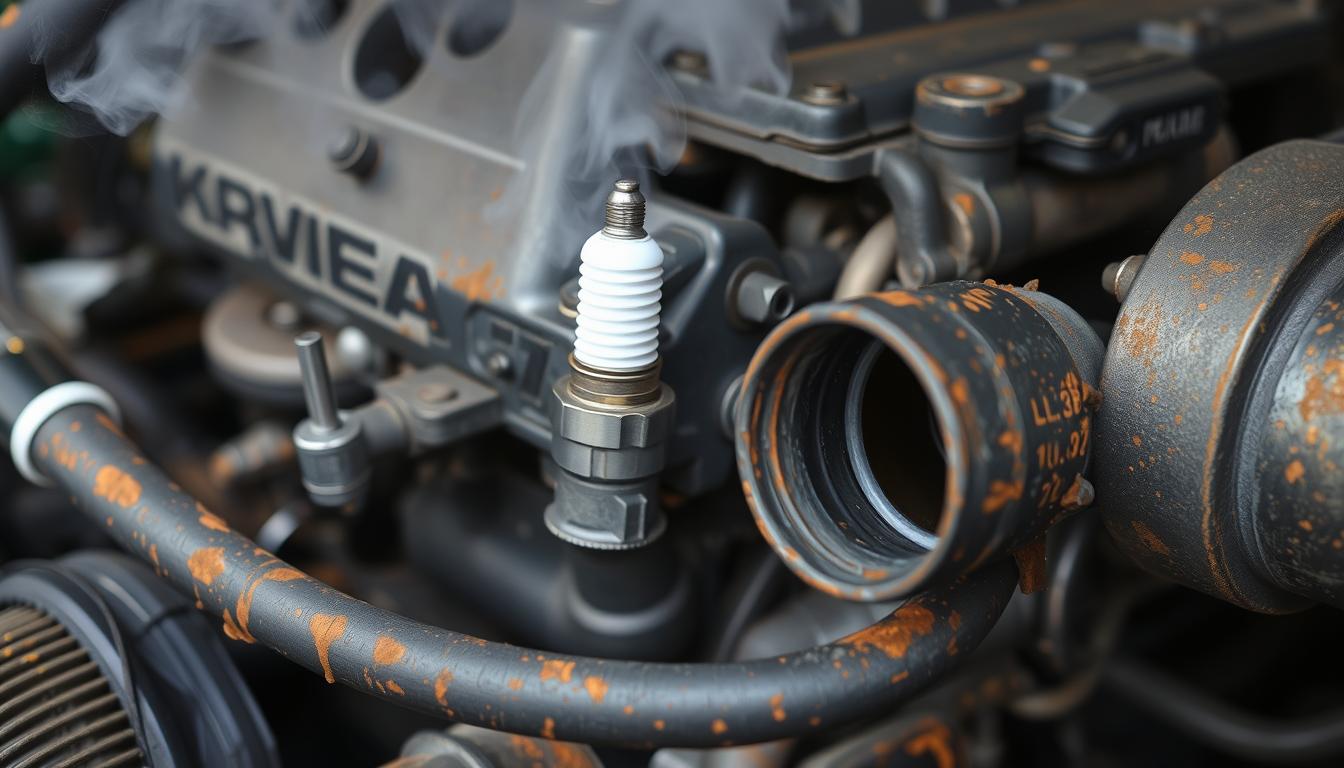Aerodynamics substantially affect your car’s performance by reducing air resistance, which boosts speed and fuel efficiency. A sleek design lowers drag and increases stability, especially at higher speeds. Features like splitters, diffusers, and spoilers help generate downforce, improving handling and safety. Proper airflow management also increases efficiency and range, especially for electric vehicles. To discover how these elements work together to optimize your car’s performance, keep exploring the key principles and innovations behind vehicle aerodynamics.
Key Takeaways
- Aerodynamics reduces air resistance, improving speed, fuel efficiency, and overall vehicle performance.
- Lower drag coefficients mean less energy needed to move the car through air.
- Design features like splitters and diffusers manipulate airflow to increase downforce and stability.
- Good aerodynamics enhances handling and high-speed stability by managing lift and turbulence.
- Regular maintenance of aerodynamic parts ensures consistent performance and fuel economy.
Understanding the Basics of Aerodynamics in Vehicles

Have you ever wondered how cars slice through the air so smoothly? It all comes down to understanding aerodynamics. This science studies how air interacts with your vehicle’s shape, aiming to reduce resistance and improve performance. A key measure is the drag coefficient, which indicates how efficiently a car moves through air. Three main forces—drag, lift, and side forces—affect how your vehicle behaves on the road. Designers add features like grooves and diffusers to guide airflow, minimize boundary layer separation, and cut drag. The shape of a vehicle significantly influences its aerodynamic efficiency, making design choices crucial. This focus on aerodynamics considerably impacts a car’s stability, handling, and efficiency. For example, optimizing airflow can also help reduce fuel consumption and emissions, contributing to more sustainable driving.
How Aerodynamics Influence Speed and Fuel Efficiency

Aerodynamics play a significant role in determining a vehicle’s speed and fuel efficiency, especially as speed increases. As you accelerate, drag force grows exponentially, meaning it takes much more power to overcome air resistance. Small improvements in aerodynamics can lead to noticeable gains in performance and efficiency. For example, doubling your speed quadruples the energy needed per mile, drastically impacting fuel consumption. High-speed cars like supercars and race cars rely heavily on aerodynamic design to maximize top speeds, but even below 100mph, aerodynamics influence stability through downforce. Reducing drag through smoother contours and active features helps improve fuel economy—every 10% reduction can boost highway efficiency by about 5%. For electric vehicles, aerodynamic efficiency is vital since it directly affects range. In short, better aerodynamics mean higher speeds with less fuel or battery energy, making your ride more energy-efficient and performance-oriented.
Key Design Features That Improve Aerodynamic Performance

To enhance a vehicle’s aerodynamic performance, designers incorporate key features that manage airflow efficiently. Front splitters, positioned at the lower front bumper, create a high-pressure zone on top, increasing downforce and improving tire grip. They also divert air from beneath the car, reducing drag and front-end lift, which boosts stability at high speeds. Measures aerodynamic efficiency; flat plate at 90° has Cd of 1.25, efficient cars around 0.28. Air ducts and vents, such as hood vents and NACA ducts, release hot air and cool critical components like brakes and the engine, minimizing lift and maintaining smooth airflow. Proper placement of water drainage and cooling systems helps prevent airflow disruption caused by excess heat or water buildup. Additionally, integrating thermal management systems ensures optimal operating temperatures without compromising aerodynamics. Side skirts and fender skirts block turbulent air entering under the vehicle and smooth wheel passage, enhancing stability. Underbody panels and diffusers streamline airflow underneath, increasing downforce without adding drag. Rear spoilers and wings manipulate airflow at the back, reducing turbulence and generating downforce to improve traction and high-speed stability.
The Role of Downforce and Its Impact on Handling

Downforce plays an essential role in how a vehicle handles at high speeds by applying a downward pressure that increases tire grip. This added vertical load enhances cornering and braking performance without extra weight, unlike mechanical grip from tires or suspension. Since downforce increases with the square of vehicle speed, it becomes significantly more effective at racing velocities. However, more downforce also means increased aerodynamic drag, which can reduce top speed and fuel efficiency. Proper balance is fundamental; uneven downforce distribution can cause understeer or oversteer, impacting stability and control. Adjustments like front splitters and rear wings help optimize handling, especially during high-speed maneuvers. Additionally, managing the distribution of downforce across the vehicle is crucial for maintaining predictable handling characteristics. Ultimately, effective downforce improves stability and driver confidence, but must be managed to prevent issues like lift or excessive drag that compromise performance.
Technologies That Enhance Aerodynamic Efficiency

Modern vehicles incorporate a range of advanced technologies designed to boost aerodynamic efficiency, which in turn enhances performance and fuel economy. Active aerodynamics adjust components like spoilers and vents in real time, optimizing airflow based on driving conditions. Understanding airflow interaction with moving vehicles aims to reduce drag and improve overall performance. Additionally, these systems can adapt to different speeds and maneuvers, providing a dynamic response that optimizes efficiency and handling. Diffusers manage airflow underneath the vehicle, reducing drag and increasing downforce for better stability. Air curtains direct air around the wheels and sides, minimizing turbulence and drag. Streamlined body contours shape the vehicle to cut resistance, while advanced materials lighten the weight, improving overall efficiency. Regular maintenance of vehicle surfaces and components can prevent aerodynamic drag from increasing due to dirt or damage, further supporting optimal performance. Computational Fluid Dynamics (CFD) allows engineers to simulate airflow and refine designs without physical prototypes, saving time and resources. Active aerodynamic systems, with movable parts and electronic controls, continuously optimize performance—delivering better handling, stability, and fuel economy across different driving scenarios.
The Importance of Wind Tunnel Testing and Optimization

Wind tunnel testing plays an essential role in refining vehicle aerodynamics by providing precise, controlled measurements of airflow around a car’s body. It allows you to analyze forces like drag, lift, and side forces accurately, helping engineers optimize designs. Here are four key benefits:
- It reduces aerodynamic drag, boosting fuel efficiency and lowering emissions.
- It improves vehicle stability by minimizing lift and lateral forces.
- It helps optimize shapes and features like mirrors, spoilers, and underbodies for smoother airflow.
- It detects airflow issues early, shortening development cycles and enhancing safety. Gold IRA investments often require precise evaluation of financial assets, similar to how aerodynamics testing ensures optimal vehicle performance. Methodologies used in wind tunnel testing include advanced data collection techniques that improve accuracy and reliability.
Using scaled models or full-size cars, wind tunnels replicate real-world conditions, giving you valuable insights into airflow patterns. This process ensures your vehicle performs better, is more efficient, and meets industry standards. Accurate airflow measurement is crucial for making informed design decisions and achieving optimal vehicle performance.
Aerodynamics in Racing and High-Performance Cars

In racing and high-performance cars, aerodynamics play a crucial role in controlling airflow to maximize speed and stability. You’ll find that designers carefully shape components like splitters, wings, diffusers, and tunnels to manage airflow for maximum balance. Massive tunnels run from the middle to the rear of the car, designed to allow air to pass through instead of around the vehicle, greatly enhance aerodynamic efficiency for high-powered drivetrains. These elements generate downforce, pressing the car onto the road for better traction, especially during high-speed cornering. Effective aerodynamic design can account for up to 80% of lap time efficiency, showcasing its importance in motorsports. Advanced cars often use adjustable aero parts to tune downforce based on track conditions. Features like ground effects, diffusers, and air tunnels help produce significant downforce without adding excessive drag. This balance ensures you maintain high speeds while staying stable and responsive through corners.
Practical Benefits of Good Aerodynamic Design for Everyday Vehicles

Good aerodynamic design offers tangible benefits for everyday vehicles, making your drives safer, more efficient, and cost-effective. Here’s how:
- Improved fuel efficiency — reducing drag lowers fuel consumption; a 10% drag reduction on highways boosts fuel economy by about 5%, especially for EVs. Air resistance opposes car movement, increasing with speed.
- Enhanced stability — less lift means better tire traction at high speeds, and features like rear diffusers stabilize the vehicle during quick maneuvers.
- Cost savings — lower energy use means fewer refuels, smaller batteries for EVs, and longer-lasting components.
- Optimized range — streamlined airflow around wheels and front ends increases the distance you can travel per charge or tank, maximizing your vehicle’s performance.
Frequently Asked Questions
How Does Aerodynamics Affect a Vehicle’S Braking Performance?
Aerodynamics plays a pivotal role in your vehicle’s braking performance by increasing downforce, which improves tire grip and stability during deceleration.
Active aerodynamic features, like spoilers, adjust to optimize drag and downforce, reducing stopping distances.
Additionally, drag forces help slow the vehicle at high speeds, while proper airflow management prevents lift that could decrease traction.
Together, these effects enhance your car’s braking efficiency and safety during deceleration.
Can Aerodynamics Influence Tire Wear and Longevity?
Imagine your tires as the heartbeat of your car, pounding the pavement with every turn. Aerodynamics acts like a gentle hand guiding this rhythm, increasing downforce that keeps tires firmly planted, reducing slip and uneven wear.
When balanced right, it spreads the load evenly, helping your tires last longer. Proper aerodynamic setup, combined with good maintenance, shields your tires from premature death, letting them serve you through countless miles.
What Role Does Aerodynamics Play in Electric Vehicle Range?
Aerodynamics plays a vital role in your electric vehicle’s range by reducing air resistance, especially at highway speeds. When your car has a streamlined design, it faces less drag, meaning it uses less energy to maintain speed.
This can lead to a 5-8% increase in range with just a 10% reduction in drag. Good aerodynamics help you go farther on a single charge and make your EV more efficient overall.
Are There Differences in Aerodynamics Between Sedans and SUVS?
You’re wondering if sedans and SUVs differ in aerodynamics. Sedans usually have lower drag coefficients because of their sleek, streamlined shape and sloping rooflines, making them more aerodynamic and fuel-efficient.
SUVs tend to have higher drag due to their taller, boxier design. However, modifications like diffusers and spoilers can improve airflow.
How Do Weather Conditions Impact Aerodynamic Efficiency?
Weather conditions totally shake up your car’s aerodynamic efficiency like a rollercoaster on steroids. When it rains, water films create drag, making your car fight to stay stable.
Hot weather thins the air, reducing downforce and risking overheating, while cold air boosts performance.
Crosswinds and turbulence toss your car around, demanding quick adjustments.
Humidity, temperature swings, and water all team up to mess with your aerodynamics — it’s a wild, unpredictable ride!
Conclusion
Think of your car as a sailboat gliding smoothly across the water. When designed with aerodynamics in mind, it slices through air like a sharp blade, maximizing speed and efficiency. Every curve and feature acts like the wind’s whisper guiding you forward, reducing resistance and boosting confidence. Embrace these principles, and your car becomes more than just transportation—it transforms into a vessel that moves effortlessly, making every journey feel like a graceful dance with the wind.










